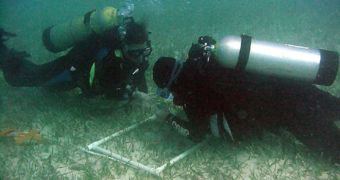According to the conclusions of a new scientific investigation published in this week's issue of the top journal Nature Geoscience, it would appear that seagrass meadows at the bottom of the sea can store up to twice as much carbon dioxide as the world's tropical and temperature forests (per unit area).
In a paper entitled “Seagrass Ecosystems as a Globally Significant Carbon Stock,” researchers propose that nearly 20 billion metric tons of carbon may be trapped in seagrasses around the world. This is the first time a global analysis of the carbon-storing potential of this vegetation is carried out.
These conclusions therefore suggest that seagrasses may be a part of the solution to global warming, and the climate change it causes. The vegetation may also help address oceanic acidification, an extremely damaging phenomenon.
Acidification occurs as increasing amounts of carbon dioxide from the atmosphere make their way into the water. The chemical reaction that occurs leads to the formation of carbonic acid, which lowers the overall pH levels of the oceans.
This has negative effects on all shelled animals, since acids attack and destroy calcium carbonate, the main material from which all shells are built. In addition, acidification leads to coral bleaching and biodiversity loss, among other effects.
Investigators at the Florida International University (FIU) say that each square kilometer of seagrass meadow is capable of storing up to 83,000 metric tons of carbon. The chemical is mostly directed into the ground underneath the plants.
Forests are only capable of storing around 30,000 metric tons of carbon per square kilometer, primarily in the form of wood. This is dangerous because all that carbon is released when trees are cut down and burnt.
The new paper suggests that 10 percent of all carbon making its way into the oceans each year is captured and stored by seagrasses. Phytoplankton and other processes account for the rest. What is interesting to note here is that seagrass meadows only take up 0.2 percent of the world's oceans.
“Seagrasses only take up a small percentage of global coastal area, but this assessment shows that they're a dynamic ecosystem for carbon transformation,” FIU scientist James Fourqurean explains.
He also holds an appointment as a researcher at the National Science Foundation's (NSF) Florida Coastal Everglades Long-Term Ecological Research (LTER) site, and was the lead author of the Nature Geoscience paper.

 14 DAY TRIAL //
14 DAY TRIAL //